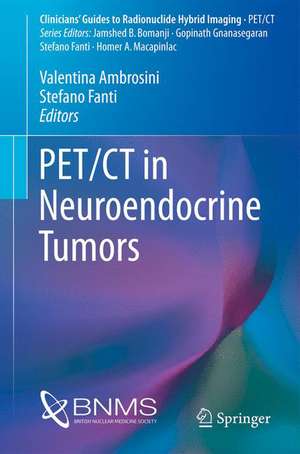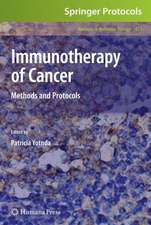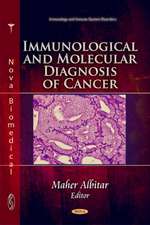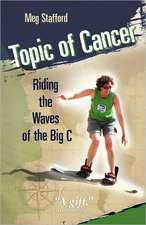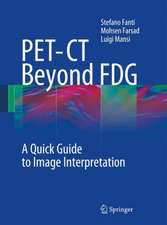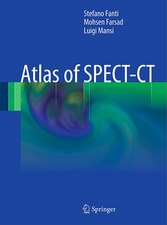PET/CT in Neuroendocrine Tumors: Clinicians’ Guides to Radionuclide Hybrid Imaging
Editat de Valentina Ambrosini, Stefano Fantien Limba Engleză Paperback – 23 mai 2016
Din seria Clinicians’ Guides to Radionuclide Hybrid Imaging
- 5%
 Preț: 363.79 lei
Preț: 363.79 lei - 5%
 Preț: 357.97 lei
Preț: 357.97 lei - 5%
 Preț: 453.68 lei
Preț: 453.68 lei - 5%
 Preț: 517.86 lei
Preț: 517.86 lei - 5%
 Preț: 452.59 lei
Preț: 452.59 lei - 5%
 Preț: 359.42 lei
Preț: 359.42 lei - 5%
 Preț: 520.60 lei
Preț: 520.60 lei - 5%
 Preț: 582.24 lei
Preț: 582.24 lei - 5%
 Preț: 550.33 lei
Preț: 550.33 lei - 5%
 Preț: 454.52 lei
Preț: 454.52 lei - 5%
 Preț: 331.79 lei
Preț: 331.79 lei - 5%
 Preț: 323.47 lei
Preț: 323.47 lei - 5%
 Preț: 416.86 lei
Preț: 416.86 lei - 5%
 Preț: 416.86 lei
Preț: 416.86 lei - 5%
 Preț: 421.20 lei
Preț: 421.20 lei - 5%
 Preț: 449.88 lei
Preț: 449.88 lei - 5%
 Preț: 328.47 lei
Preț: 328.47 lei - 5%
 Preț: 512.58 lei
Preț: 512.58 lei - 5%
 Preț: 515.90 lei
Preț: 515.90 lei - 25%
 Preț: 268.74 lei
Preț: 268.74 lei
Preț: 480.20 lei
Preț vechi: 505.47 lei
-5% Nou
Puncte Express: 720
Preț estimativ în valută:
91.92€ • 99.87$ • 77.26£
91.92€ • 99.87$ • 77.26£
Carte tipărită la comandă
Livrare economică 16-22 aprilie
Preluare comenzi: 021 569.72.76
Specificații
ISBN-13: 9783319292021
ISBN-10: 3319292021
Pagini: 80
Ilustrații: XIII, 76 p. 44 illus., 35 illus. in color.
Dimensiuni: 155 x 235 x 11 mm
Greutate: 0.2 kg
Ediția:1st ed. 2016
Editura: Springer International Publishing
Colecția Springer
Seriile Clinicians’ Guides to Radionuclide Hybrid Imaging, PET/CT
Locul publicării:Cham, Switzerland
ISBN-10: 3319292021
Pagini: 80
Ilustrații: XIII, 76 p. 44 illus., 35 illus. in color.
Dimensiuni: 155 x 235 x 11 mm
Greutate: 0.2 kg
Ediția:1st ed. 2016
Editura: Springer International Publishing
Colecția Springer
Seriile Clinicians’ Guides to Radionuclide Hybrid Imaging, PET/CT
Locul publicării:Cham, Switzerland
Cuprins
Neuroendocrine Tumours: Epidemiology.- Pathology.- Management.- Radiological Imaging.- Radionuclide Imaging.
PET/ CT in Neuroendocrine Tumors: Basic Principles of PET/ CT imaging.- Radiopharmaceuticals.- PET/ CT in Neuroendocrine Tumours.
PET/ CT in Neuroendocrine Tumors: Basic Principles of PET/ CT imaging.- Radiopharmaceuticals.- PET/ CT in Neuroendocrine Tumours.
Recenzii
“This volume provides a succinct summary of the current status of neuroendocrine malignancy, with a particular focus on PETCT imaging techniques. … The book is likely to be of most interest to clinicians involved in the management of this diverse patient group that includes oncologists, nurses, pathologists, surgeons, radiographers/technologists, radiologists and nuclear medicine physicians. An ideal use is as a quick reference guide both in preparation for and at multidisciplinary meetings.” (Dr. Andy Scarsbrook, RAD Magazine, January, 2017)
“The book is mainly directed to all clinicians interested in the role of nuclear medicine in patients with NETs. Residents and practitioners in nuclear medicine and radiology may also find this book interesting and useful for improving their understanding of the potential of nuclear medicine in patients affected with these tumoursand then for explaining this to their referrers.” (Manuela Amato and Luigi Mansi, European Journal of Nuclear Medicine and Molecular Imaging, Vol. 44, 2017)
“The intended audience includes anyone involved in the multidisciplinary approach to diagnosis and management of patients with neuroendocrine tumors. This includes nuclear medicine physicians, radiologists, technologists, and pathologists, as well as clinical specialists such as oncologists, endocrinologists, and surgeons. … This is a quick read, but it does not fall short in providing a concise, up-to-date overview of the utility of nuclear medicine, particularly PET/CT, for imaging NETs.” (Daniel Thut, Doody's Book Reviews, August, 2016)
“The book is mainly directed to all clinicians interested in the role of nuclear medicine in patients with NETs. Residents and practitioners in nuclear medicine and radiology may also find this book interesting and useful for improving their understanding of the potential of nuclear medicine in patients affected with these tumoursand then for explaining this to their referrers.” (Manuela Amato and Luigi Mansi, European Journal of Nuclear Medicine and Molecular Imaging, Vol. 44, 2017)
“The intended audience includes anyone involved in the multidisciplinary approach to diagnosis and management of patients with neuroendocrine tumors. This includes nuclear medicine physicians, radiologists, technologists, and pathologists, as well as clinical specialists such as oncologists, endocrinologists, and surgeons. … This is a quick read, but it does not fall short in providing a concise, up-to-date overview of the utility of nuclear medicine, particularly PET/CT, for imaging NETs.” (Daniel Thut, Doody's Book Reviews, August, 2016)
Notă biografică
Valentina Ambrosini is Associate Professor in Nuclear Medicine (sector MED-36, Diagnostic Imaging) at the University of Bologna. Full-time employed Nuclear Medicine Physician at the PET Center, Nuclear Medicine Unit, S.Orsola-Malpighi University Hospital, Bologna, Italy. She received her medical degree and her Ph.D at the University of Bologna. She was trained and became certified specialist in both in Nuclear Medicine and Respiratory Medicine at the University of Bologna. Initially devoted to small animal imaging with PET, her interests were later focused on clinical PET/CT imaging, with both FDG and non-FDG tracers. She performed many novel investigations on PET/CT imaging with FDG and non-FDG tracers, whose results were published in peer reviewed international journals. She teaches Nuclear Medicine at Medical School and in specialty schools of the University of Bologna.
Stefano Fanti is Associate Professor in Nuclear Medicine (sector MED-36, Diagnostic Imaging) at the University of Bologna. Director of the Nuclear Medicine Unit of the S.Orsola-Malpighi University Hospital, Bologna, Italy. Director of the School of Specialty in Nuclear Medicine of the University of Bologna. He received his medical degree at the University of Bologna. He was trained and became certified specialist in Nuclear Medicine at the University of Bologna. He participated as referent physician to the site planning and start up (2002) of the PET center of the S.Orsola-Malpighi University Hospital that, under his supervision and leadership, is now performing more 10000 exams per year and has become one of the most active in Europe. His interest are focused on PET/CT imaging with both FDG and non-FDG tracers. He has conducted many novel investigations with results published in peer reviewed international journals. He has courses at Medical School (University of Bologna) on Nuclear Medicine, and in specialty schools of the University of Bologna.
Stefano Fanti is Associate Professor in Nuclear Medicine (sector MED-36, Diagnostic Imaging) at the University of Bologna. Director of the Nuclear Medicine Unit of the S.Orsola-Malpighi University Hospital, Bologna, Italy. Director of the School of Specialty in Nuclear Medicine of the University of Bologna. He received his medical degree at the University of Bologna. He was trained and became certified specialist in Nuclear Medicine at the University of Bologna. He participated as referent physician to the site planning and start up (2002) of the PET center of the S.Orsola-Malpighi University Hospital that, under his supervision and leadership, is now performing more 10000 exams per year and has become one of the most active in Europe. His interest are focused on PET/CT imaging with both FDG and non-FDG tracers. He has conducted many novel investigations with results published in peer reviewed international journals. He has courses at Medical School (University of Bologna) on Nuclear Medicine, and in specialty schools of the University of Bologna.
Textul de pe ultima copertă
This pocket book provides up-to-date descriptions of the most relevant features of neuroendocrine tumors (NETs) and the imaging modalities currently available to assist specialists (clinicians, pathologists, radiologists, nuclear medicine physicians) in selecting optimal patient management based on interdisciplinary collaboration. As the title indicates, the focus is particularly on PET/CT, with coverage of basic principles, the available radiopharmaceuticals, indications, typical and atypical appearances, normal variants and artifacts, advantages, limitations, and pitfalls. In addition, succinct information is provided on the use of other imaging modalities, including SPECT, CT, and MRI, and on pathology and treatment options. Imaging teaching cases are presented, and key points are highlighted throughout. The book is published as part of a series on hybrid imaging that is specifically aimed at referring clinicians, nuclear medicine/radiology physicians, radiographers/technologists, and nurses who routinely work in nuclear medicine and participate in multidisciplinary meetings.
Caracteristici
Covers all aspects of the use of PET/CT for assessment of NETs Examines the role of other imaging modalities Presents imaging teaching cases Highlights key points for clinical practice Discusses the clinical and pathological background
